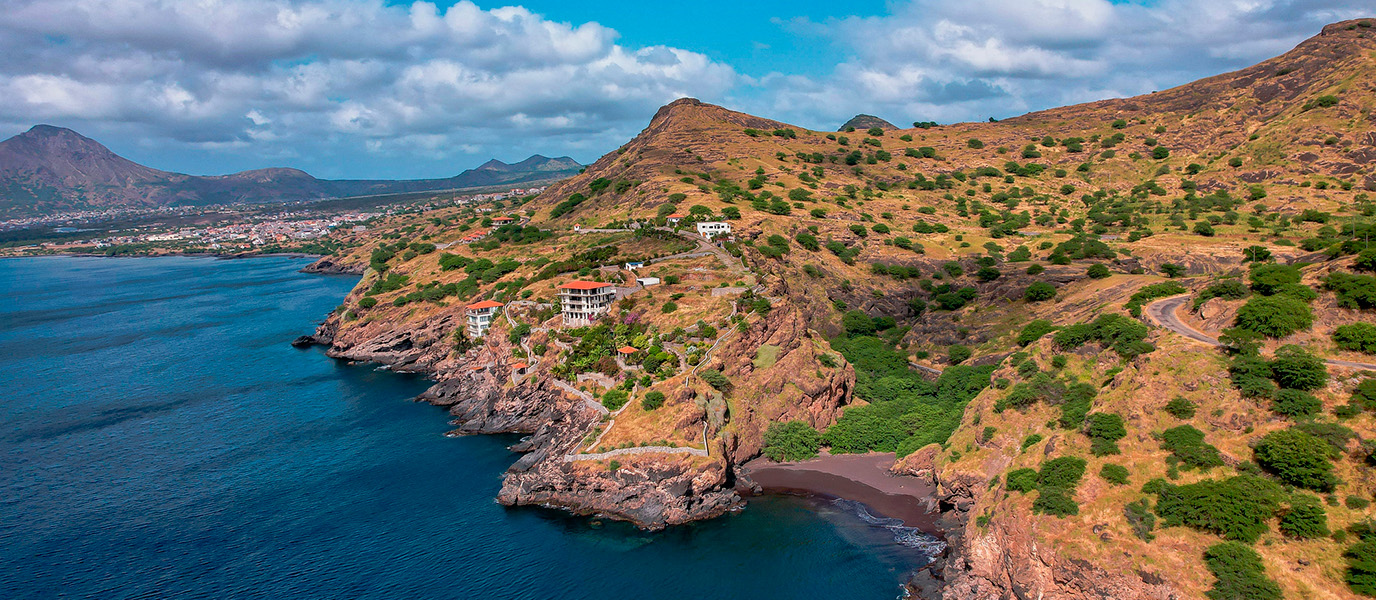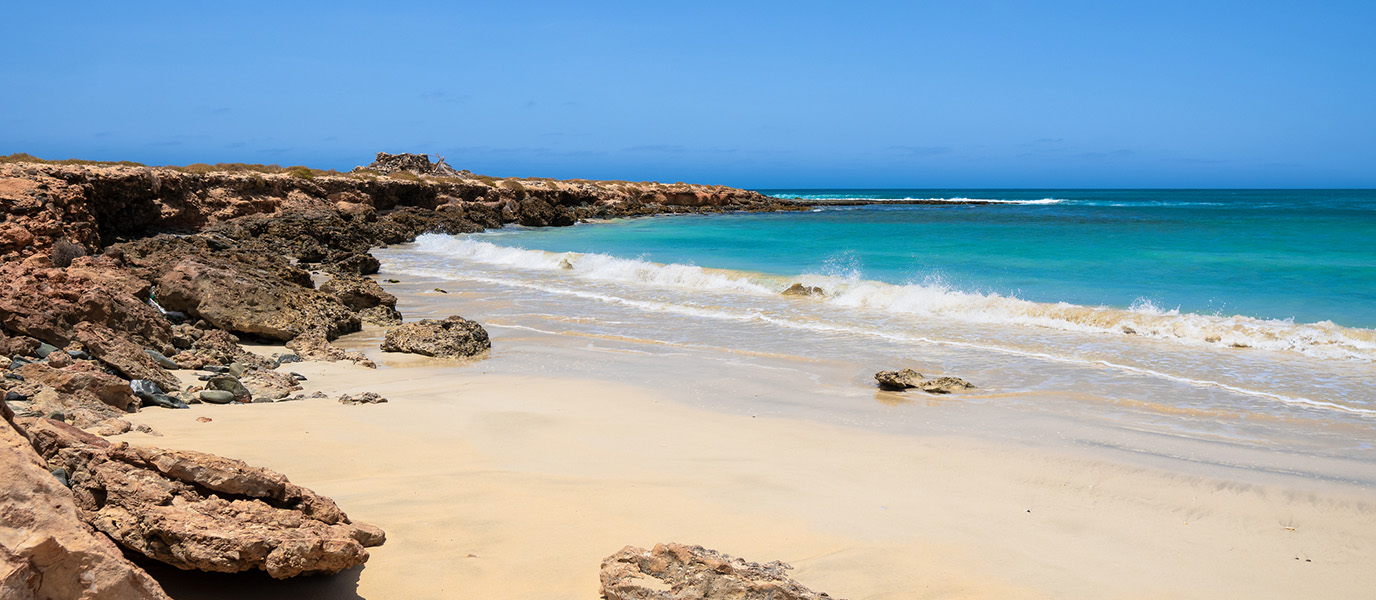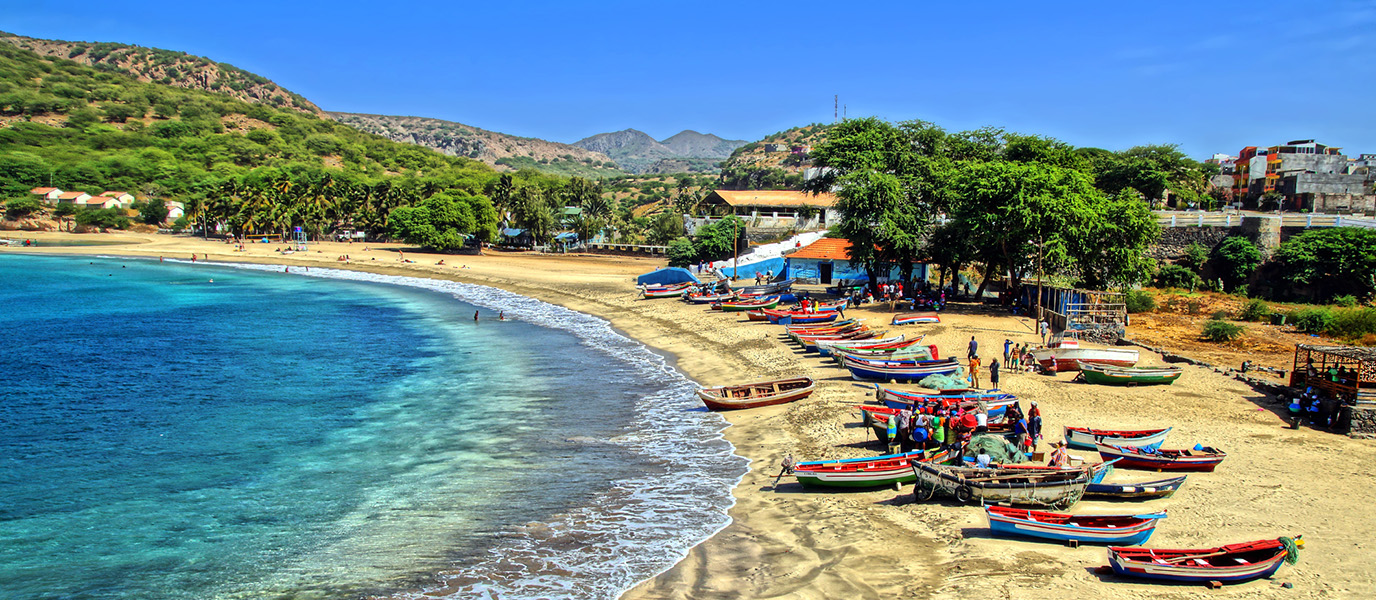Tarrafal, whose name comes from the plant ‘tarafe’, which grows in the sandy areas along Cape Verde’s coastline, is a beautiful city around 70 kilometres from Praia, the capital of the archipelago. Bordered by the Atlantic Ocean to the north, east and west and the municipalities of San Miguel and Santa Catalina to the south, the region is surrounded by the Serra Malagueta and ample farmland.
The city’s festivities are held every year on 15 January, coinciding with the feast of Saint Amaro. Carnivals are also celebrated in style with several groups playing a very active role in the celebrations.
Mount Graciosa is the highest point in the city, from where there are beautiful views of Mangui, a city that also has a large beach lined with palm trees.
History of Tarrafal
The municipality of Tarrafal was founded in 1917 after it separated from Santa Catalina. It was left with an important port, from which seeds from the jatropha plant—a plant with a wide range of uses, including the production of biodiesel—were traded. The town’s decline came with the construction of the Chao Born concentration camp, located very close to the village. The camp, which consists of several buildings and began operating in 1936, holds the memory of a dark colonial past and of the Cape Verdean people’s struggle for freedom, so much so that it is also known as the ‘Slow Death Camp’. The camp was closed in 1954 and reopened in 1961 to imprison the independence leaders of Angola, Cape Verde and Guinea Bissau. After the Carnation Revolution it was closed for good and is now used as a Resistance Museum.
In 1997, the Tarrafal region was reduced in size after the creation of the new San Miguel municipality. Today it has about 16,000 inhabitants.
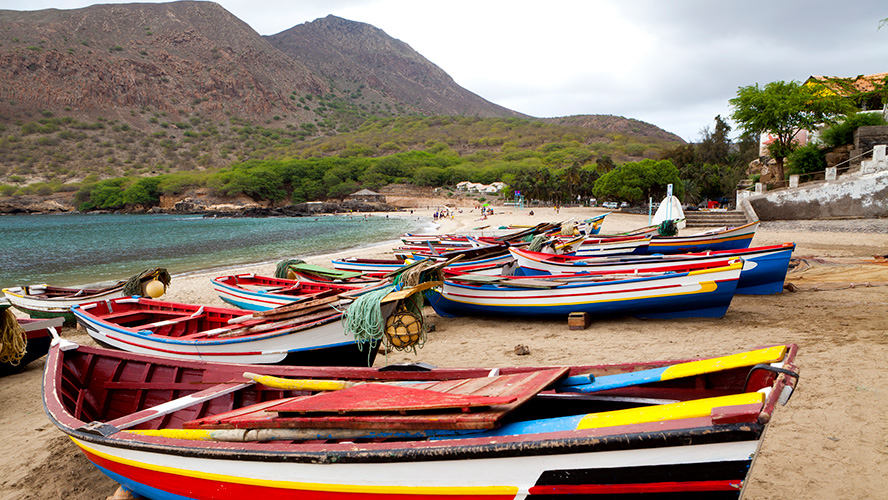
Where is Tarrafal and how to get there
Situated 70 kilometres from Praia, the capital of Cape Verde, Tarrafal is a tourist resort that many visitors come to by public transport. From Praia you must take an aluguer (bus) from Sucupira Market, in the Plateau neighbourhood. The bus departs several times a day. If you prefer, you can also take a taxi.
What can you see on your visit to Tarrafal
It is worth taking a leisurely stroll through Tarrafal’s historical quarter to discover its main square, its church, its gardens and its cobblestone streets, whose architecture testifies to its Portuguese colonial past. The concentration camp, known as the ‘Portuguese Auschwitz’, situated in Chao Born, is today a Resistance Museum that makes for a very interesting visit. Climbing up to Mount Graciosa to enjoy the best views of the surrounding area is also recommended. Be sure to also visit the Centre of Arts and Crafts in Tras-os-Montes to discover the secrets of traditional pottery. Finally, don’t miss a visit to Mangui beach, a long, beautiful stretch of sand dotted with palm trees. Visiting the municipal market, where the catches of local fishermen arrive, is also highly recommended.
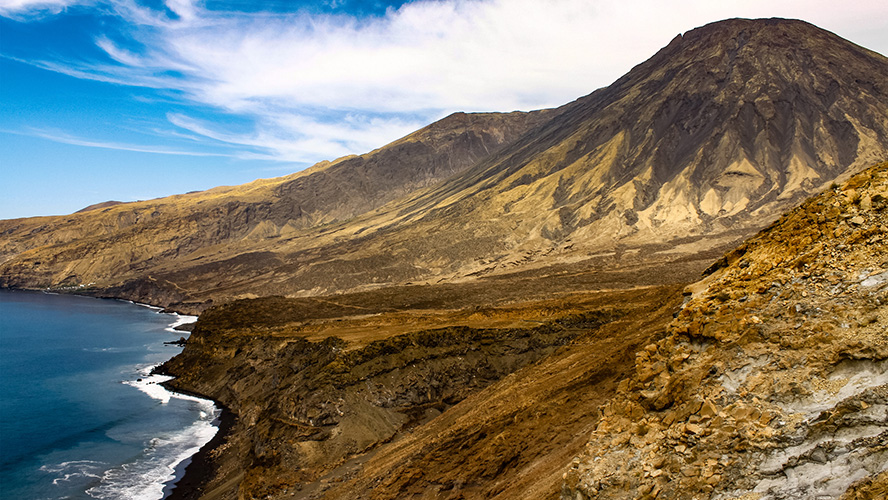
Tarrafal beach
With its white sand and crystal clear water, Tarrafal beach is possibly the most beautiful beach on the island of Santiago in Cape Verde. A perfect place to relax and enjoy the sun and peace and quiet, it is divided into two very different areas: one of them, Mar di Baxu, and the other, the large Tarrafal beach, both of which are very charming.
Mar di Baxu beach was known in the past as ‘the president’s beach’ and is today a fairly quiet place with tables so you can enjoy a picnic or take a break. It also has a small park with trees, some restaurants and an open-air gym. And if you want to enjoy a nice view of the area, all you have to do is climb up a small volcanic rock cliff that is easily accessible on foot. At one end of the cliff is the Ponta de Salto, which many swimmers use as a natural diving board.
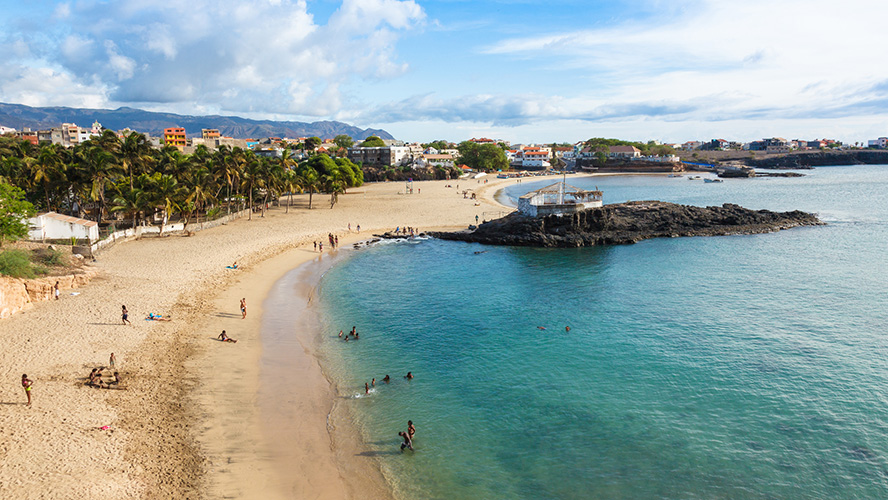
Tarrafal beach, on the other hand, tends to be livelier than Mar di Baxu. Here, you can enjoy sports such as football and beach games. There are also several bars where you can have a drink and relax on the sun loungers. And if you are feeling more adventurous, you can rent a jet ski or go body surfing. At the end of the beach, towards the mountain, you can see the word ‘Tarrafal’ engraved in the rock. From there, you can reach a viewpoint that offers beautiful views of the bay and of the beach. It is worth visiting Tarrafal beach early in the morning to watch the fishermen arrive with their boats full of fresh fish, especially frigate tuna.
Places to visit in the surrounding area
Not far from Tarrafal is the Ponta Pedra lighthouse and the surrounding natural pools, which are located at the foot of Mount Graciosa. From Tarrafal’s historic old slaughterhouse, the ‘Matadouro Municipal’, you can enjoy beautiful views of the town, with Mount Graciosa and the bay of Tarrafal in the background. If you like diving and snorkelling, the best place to go is Ponta d’Atum, where there are underwater caves. There is also a Dive Centre here, which offers dives in incredible underwater landscapes at fairly cheap prices.




































































